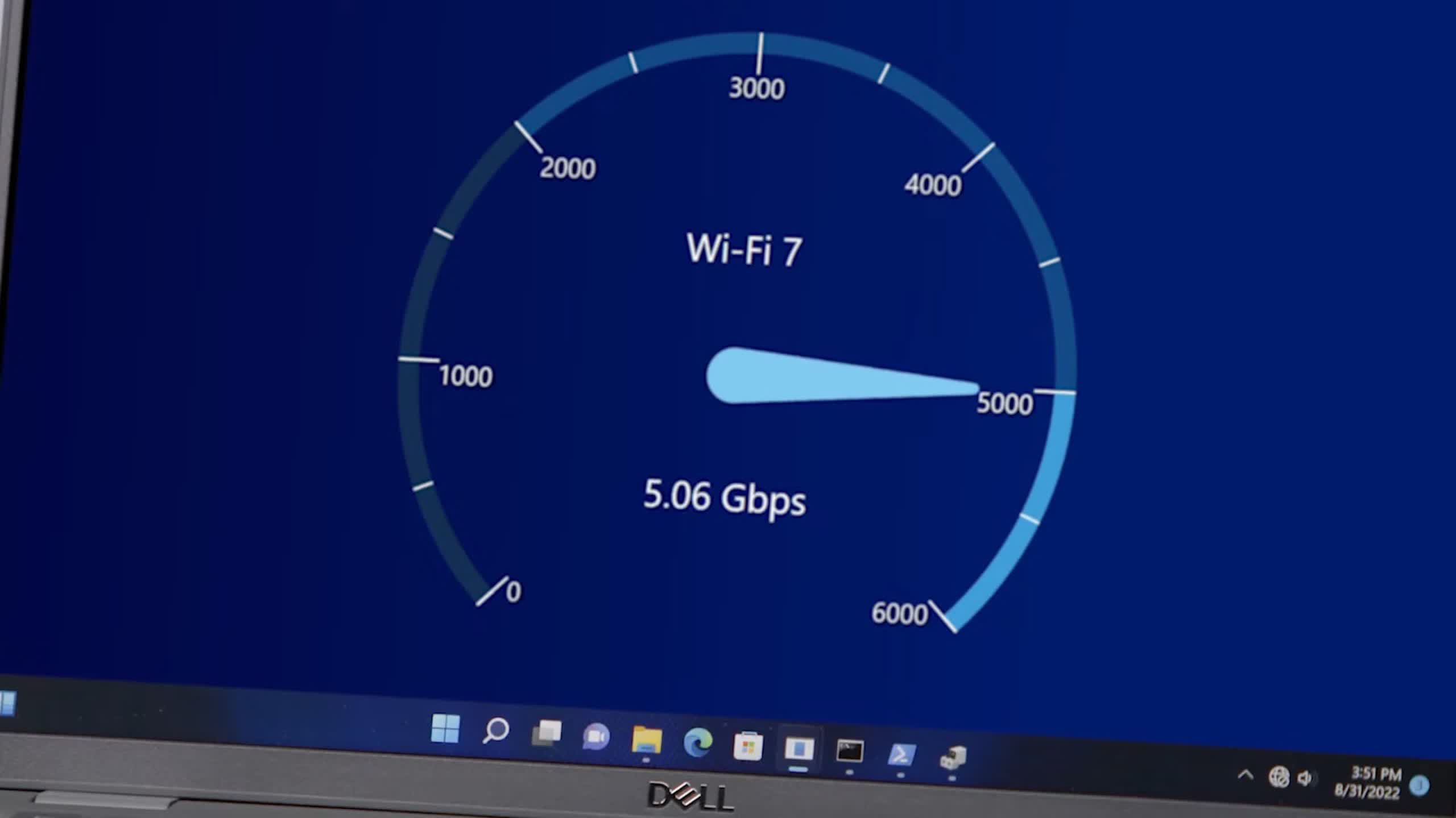What just happened? Intel and Broadcom held the first successful demonstration of a "cross-vendor" Wi-Fi 7 connection this week. The event marks a milestone on the road to the next major step in Wi-Fi standards. Wi-Fi 7 (also known as 802.11be) devices will likely become more common over the next few years.

In a joint presentation, Intel and Broadcom linked a laptop running one of its processors to a Broadcom Wi-Fi 7 modem, achieving speeds of 5Gbps. The trial showcases a drastic leap over the current standard --Wi-Fi 6 (802.11ax) --which can reach up to around 1.7Gbps.
In addition to allowing speeds up to 5.8Gbps, Wi-Fi 7's new band frequencies and channel bandwidths give routers more stable simultaneous connections to larger numbers of devices. Wi-Fi 6 can access 20, 40, 80, and 160MHz channel bandwidths in the 2.4GHz and 5GHz frequencies. Wi-Fi 7 adds a 320MHz channel and a 6GHz frequency, intelligently switching between all frequencies and channels for increased stability. Intel thinks Wi-Fi 7 will help emerging technologies like augmented reality, virtual reality, and 16K media streaming.
The Wi-Fi 6E standard adds 6GHz support to Wi-Fi 6 for greater bandwidth but lacks buy-in from hardware vendors. Pandemic supply chain problems made manufacturing Wi-Fi 6E-compliant products less cost-effective than sticking with Wi-Fi 6 until Wi-Fi 7 arrives. Before Apple unveiled the iPhone 14 this week, speculation suggested it might incorporate Wi-Fi 6E. However, Apple's official spec sheet for its latest phone shoots those rumors down, and a Wi-Fi 7-ready iPhone likely won't appear for some time.

Last month, Intel said it should have Wi-Fi 7-capable laptops and desktops ready for the mass market in 2024 and 2025. Other companies have recently demonstrated Wi-Fi 7 hardware using the draft specifications. The IEEE could finalize the Wi-Fi 7 specifications in 2024.
MediaTek demonstrated the upcoming standard at CES in January using its hardware rather than a cross-vendor trial. Qualcomm has hyped Wi-Fi 7 since 2019 and finally unveiled its nearly platform-agnostic FastConnect 7800 chip in March at MWC. The only Wi-FI 7 router currently available is H3C's Magic BE18000 with a maximum PHY rate between 1148 and 11530Mbps.
https://www.techspot.com/news/95930-intel-broadcom-reach-5gbps-wi-fi-7-demonstration.html